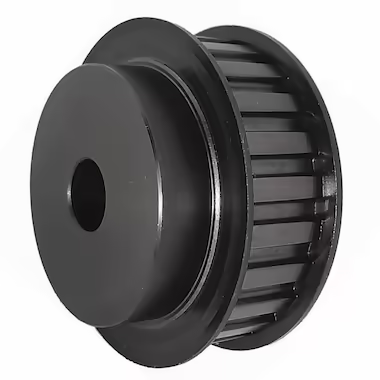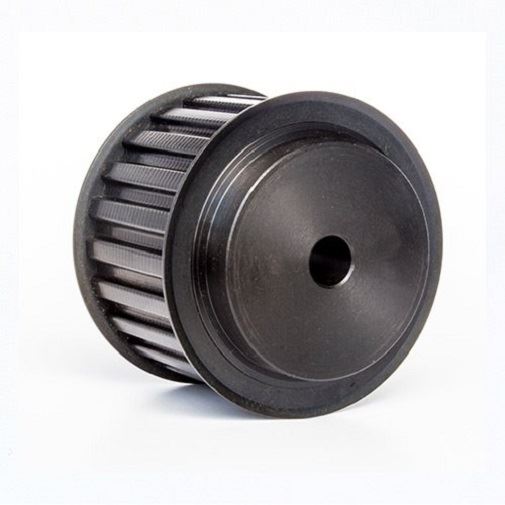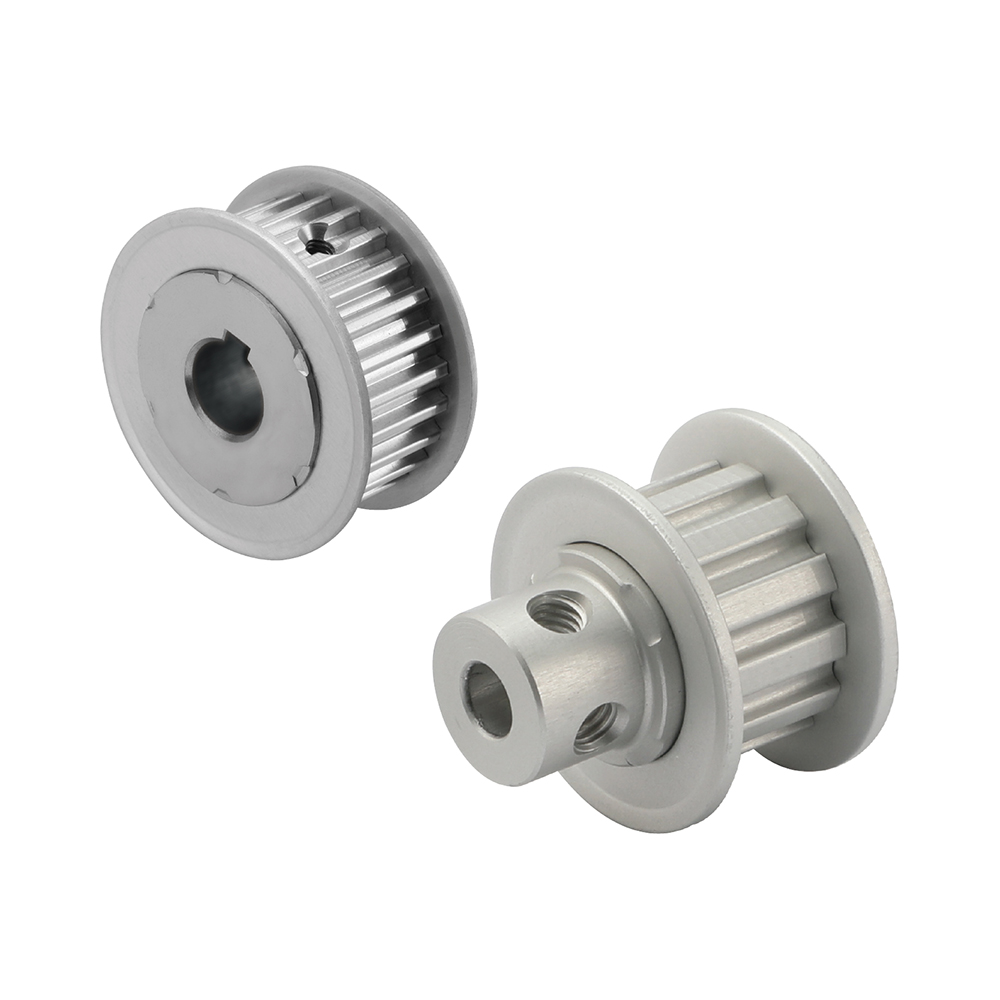Product Description
HTD 8M-20 pulley for belt width 20 mm
22-8M-20, 24-8M-20, 26-8M-20, 28-8M-20, 30-8M-20, 32-8M-20,
24-8M-20, 36-8M-20, 38-8M-20, 40-8M-20, 44-8M-20, 48-8M-20,
56-8M-20, 64-8M-20, 72-8M-20, 80-8M-20, 90-8M-20
HTD 8M-30 pulley for belt width 30 mm
22-8M-30, 24-8M-30, 26-8M-30, 28-8M-30, 30-8M-30, 32-8M-30,
34-8M-30, 36-8M-30, 38-8M-30, 40-8M-30, 44-8M-30, 48-8M-30,
56-8M-30, 64-8M-30, 72-8M-30, 80-8M-30, 90-8M-30, 112-8M-30
HTD 8M-50 pulley for belt width 50 mm
22-8M-50, 24-8M-50, 26-8M-50, 28-8M-50, 30-8M-50, 32-8M-50,
34-8M-50, 36-8M-50, 38-8M-50, 40-8M-50, 44-8M-50, 48-8M-50,
56-8M-50, 64-8M-50, 72-8M-50, 80-8M-50, 90-8M-50, 112-8M-50
HTD 8M-85 pulley for belt width 85 mm
22-8M-85, 24-8M-85, 26-8M-85, 28-8M-85, 30-8M-85, 32-8M-85
34-8M-85, 36-8M-85, 38-8M-85, 40-8M-85, 44-8M-85, 48-8M-85
56-8M-85, 64-8M-85, 72-8M-85, 80-8M-85, 90-8M-85, 112-8M-85
| Certification: | CE, ISO |
|---|---|
| Pulley Sizes: | Type C |
| Manufacturing Process: | Forging |
| Material: | Aluminum |
| Surface Treatment: | Polishing |
| Application: | Chemical Industry, Grain Transport, Mining Transport, Printer Cutter |
| Samples: |
US$ 1/Piece
1 Piece(Min.Order) | |
|---|
| Customization: |
Available
| Customized Request |
|---|

How do XL pulleys compare to other pulley types, such as HTD or V-belt pulleys?
XL pulleys, HTD pulleys, and V-belt pulleys are all popular types of pulleys used in mechanical systems. Here is a detailed comparison of XL pulleys with HTD and V-belt pulleys:
1. Tooth Profile:
XL pulleys and HTD (High Torque Drive) pulleys both utilize toothed belts for power transmission. The main difference lies in their tooth profiles. XL pulleys have trapezoidal teeth, while HTD pulleys have a curvilinear tooth profile. V-belt pulleys, on the other hand, are designed for V-belts, which have a wider, wedge-shaped cross-section.
2. Power Transmission Capacity:
XL pulleys and HTD pulleys offer higher power transmission capacities compared to V-belt pulleys. The toothed belt designs of XL and HTD pulleys provide a positive engagement, preventing slippage under higher loads or torque. V-belt pulleys rely on friction between the belt and pulley, limiting their power transmission capacity.
3. Speed Capability:
XL pulleys and HTD pulleys are both suitable for higher speed applications compared to V-belt pulleys. The toothed belt designs allow for better grip and reduced belt slippage, enabling XL and HTD pulleys to operate at higher rotational speeds without compromising performance. V-belt pulleys are generally suitable for lower speed applications.
4. Efficiency:
XL pulleys and HTD pulleys offer higher efficiency compared to V-belt pulleys. The positive engagement between the toothed belts and pulleys in XL and HTD systems minimizes slippage and associated energy losses. V-belt pulleys, relying on friction, may experience higher energy losses due to belt slip.
5. Precision and Positioning:
XL pulleys and HTD pulleys provide better positional accuracy and reduced backlash compared to V-belt pulleys. The toothed belt systems offer improved control and synchronization, making them suitable for applications that require precise positioning or timing, such as robotics or CNC machines.
6. Noise and Vibration:
XL pulleys and HTD pulleys generally produce less noise and vibration compared to V-belt pulleys. The toothed belt systems exhibit smoother operation due to their positive engagement, reducing noise and vibration levels. V-belt pulleys may generate more noise and vibration due to potential slippage and belt oscillation.
7. Installation and Maintenance:
XL pulleys, HTD pulleys, and V-belt pulleys are all relatively easy to install and maintain. However, V-belt pulleys may require more frequent tension adjustments and periodic belt replacements due to belt wear and stretch. Toothed belt systems, including XL and HTD pulleys, often require less maintenance and offer longer belt life.
8. Application Suitability:
The choice between XL pulleys, HTD pulleys, and V-belt pulleys depends on the specific application requirements. XL and HTD pulleys are commonly used in industrial automation, power transmission, and precision machinery applications that demand higher torque, speed, and accuracy. V-belt pulleys are often employed in applications such as HVAC systems, automotive engines, and smaller machinery.
In summary, XL pulleys, HTD pulleys, and V-belt pulleys have differences in tooth profile, power transmission capacity, speed capability, efficiency, precision, noise/vibration levels, installation/maintenance, and application suitability. Understanding these differences is crucial in selecting the most appropriate pulley type for a given mechanical system and its specific requirements.

What maintenance practices should be followed to ensure the longevity of XL pulleys?
To ensure the longevity of XL pulleys, it is important to follow proper maintenance practices. Here are some key practices to consider:
1. Regular Inspection:
Perform regular visual inspections of the XL pulleys to check for any signs of wear, damage, or misalignment. Look for worn-out or damaged teeth, cracks, or excessive wear on the pulley surfaces. Inspect the pulleys for proper alignment and ensure that they are securely mounted.
2. Belt Tension:
Maintain the proper tension in the timing belt that is used with the XL pulleys. Incorrect belt tension can cause slippage, premature wear, and reduced power transmission efficiency. Follow the manufacturer’s guidelines or specifications to determine the correct tension for the specific application and adjust it accordingly.
3. Lubrication:
XL pulleys typically do not require lubrication as they are designed for dry operation. However, in some cases, the manufacturer may recommend specific lubrication practices for certain applications. If lubrication is required, use the recommended lubricant and follow the manufacturer’s instructions carefully.
4. Cleaning:
Keep the XL pulleys clean and free from debris, dust, or other contaminants. Regularly clean the pulleys using a soft brush or cloth to remove any build-up that may affect their performance or cause premature wear.
5. Environmental Considerations:
Consider the operating environment of the XL pulleys and take appropriate measures to protect them. In harsh or corrosive environments, use pulleys made from materials that are resistant to corrosion or degradation. Implement protective measures such as covers or enclosures to shield the pulleys from exposure to dirt, moisture, or chemicals.
6. Replacement:
If any signs of significant wear, damage, or deformation are observed during inspections, consider replacing the XL pulleys promptly. Continuing to use worn-out or damaged pulleys can lead to reduced performance, increased risk of failure, and potential damage to other components in the power transmission system.
It is important to consult the manufacturer’s guidelines and recommendations for specific maintenance practices for the XL pulleys used in your application. Following the recommended maintenance practices will help ensure the longevity, reliability, and optimal performance of the XL pulleys in power transmission systems.

How do XL pulleys enhance the precision and efficiency of mechanical systems?
XL pulleys play a crucial role in enhancing the precision and efficiency of mechanical systems by providing precise motion control and efficient power transmission. Here are the key ways in which XL pulleys contribute to the improvement of mechanical systems:
1. Accurate Motion Control:
XL pulleys, when used in conjunction with timing belts, enable accurate and synchronized motion control. The tooth profile of XL pulleys is designed to match the tooth profile of the timing belt, ensuring precise engagement and motion transfer. This accuracy in motion control allows mechanical systems to achieve precise positioning, movement, and coordination of components.
2. Positioning Accuracy:
By providing precise motion control, XL pulleys contribute to positioning accuracy in mechanical systems. Whether it’s a robotic arm, a CNC machine tool, or a 3D printer, the precise movement enabled by XL pulleys ensures that components or tools are positioned with high accuracy, resulting in the desired output or product quality.
3. Repeatability:
XL pulleys facilitate consistent and repeatable motion in mechanical systems. The accurate engagement between the pulleys and timing belts ensures that the same motion is reproduced reliably each time. This repeatability is essential in applications where consistent results are required, such as in manufacturing processes or automated systems.
4. Reduced Backlash:
Backlash refers to the undesired clearance or play between mating components, which can cause inaccuracies and imprecise motion. XL pulleys, with their precise tooth engagement with timing belts, minimize backlash in mechanical systems. This reduction in backlash improves the overall precision and eliminates unwanted movement or positioning errors.
5. Efficiency in Power Transmission:
XL pulleys, when combined with properly sized timing belts, offer efficient power transmission in mechanical systems. The toothed nature of the pulleys and belts allows for high torque transfer, minimizing slippage and ensuring reliable power delivery. This efficiency in power transmission maximizes the utilization of energy and reduces energy losses, resulting in improved overall system efficiency.
6. Interchangeability and Flexibility:
XL pulleys adhere to standardized dimensions and tooth profiles, allowing for interchangeability between different manufacturers. This interchangeability provides flexibility in system design, maintenance, and upgrades. It also simplifies the replacement of pulleys, which can be beneficial in minimizing downtime and reducing costs.
7. Load Handling Capability:
XL pulleys are designed to handle moderate to high torque requirements. This load handling capability makes them suitable for various applications that require robust and reliable power transmission, such as in heavy machinery, automation systems, or industrial equipment.
By enhancing precision in motion control, improving efficiency in power transmission, and offering flexibility in system design, XL pulleys contribute to the overall performance and reliability of mechanical systems. They enable accurate positioning, repeatable motion, and efficient energy transfer, leading to improved productivity, quality, and operational efficiency.


editor by CX
2023-10-23
